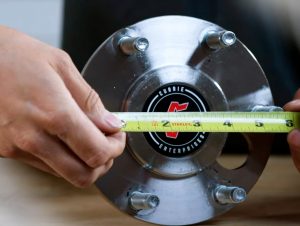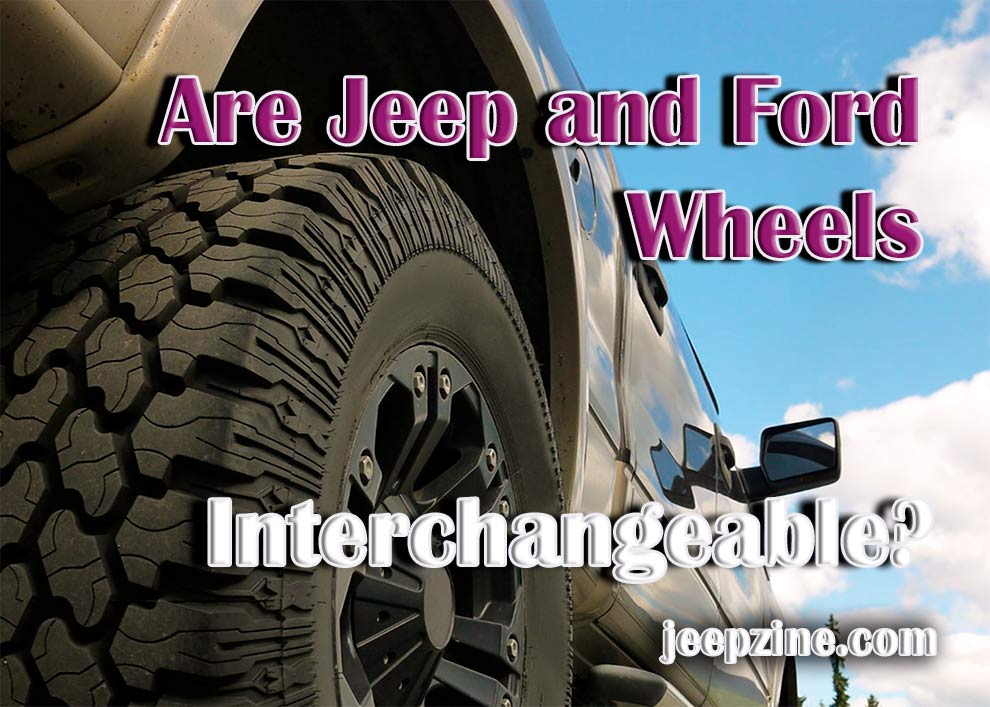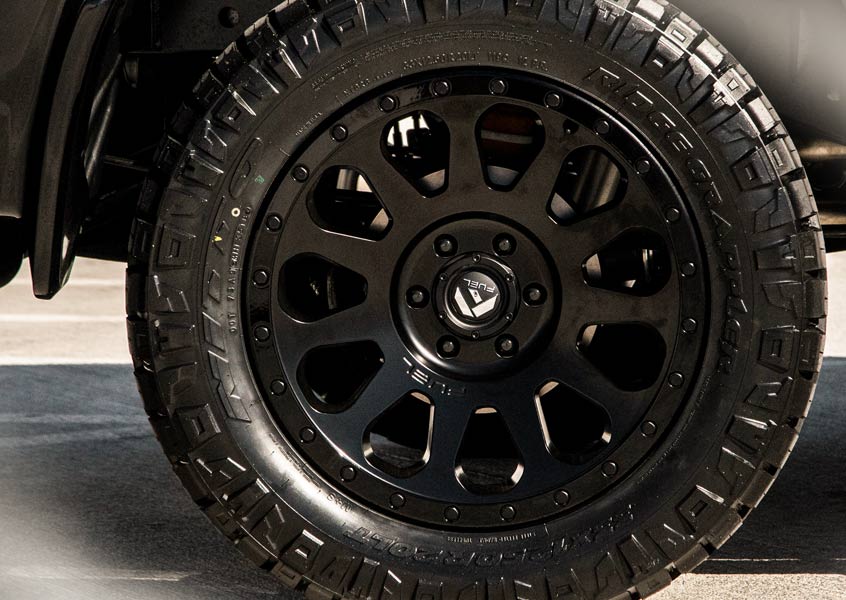Sometimes, you can’t find the right set of rims at a local auto shop. Other times, you see an excellent pack of wheels with a great discount only to learn the kit is not for your vehicle. These situations happen all the time, especially to the owners of Ford and Jeep rides in the market for premium-quality wheels. But what if I told you that some rims can work on both rides?
That’s right: you just gotta know the correct technique for measuring the rims. I’m talking about lug patterns, dimensions, rim width, and more. This isn’t a universal rule and only applies to certain models, though. So, join me in this guide, and let’s find the answer to the most important question – are Jeep and Ford wheels interchangeable, or not?
It All Comes Down to the Bolt Patterns
You might’ve heard about lug templates, also known as bolt circles or bolt patterns. This describes the layout of the mounting spots where the bolts go. Here’s how it works: unless the rim has the exact right pattern, it won’t fit on the hub of your Jeep or Ford. Yep, it’s that simple. That’s pretty much all you need to know about this fancy term. And don’t try any DIY tricks – that will only cause you trouble later.
Now, the most common pattern among both Jeep and Ford vehicles is the five-bolt layout. I’m talking about the 5 x 4.5, 5 x 5, and 5 x 5.5 variations. The 6 x 5.5 pattern is also pretty popular, but not as much. So, which layout does your Jeep/Ford wheel hub have? Let’s go ahead and talk about that in the next section! Besides, here you can find everything that you need to know about putting bigger tires on your truck.
Proper Lug Measurement Techniques

But what if it’s an even number on the pattern? It will be much easier, actually. Say, on a four-lug pattern, measure the center-to-center distance between two holes – that’s all you need to do.
Wheel Dimension and Rim Diameter/Width
With the bolt pattern out of the way, the next thing to consider is the diameter of the rim. This is important: measure the diameter of the Ford/Jeep wheel where all the beads are – leave the rim’s outer lip alone. The rim’s width comes next. This time around, go from the outer lip’s inside to the spot where the beads sit. The size of the wheel also matters, of course. If they’re too big, they won’t fit.
You’ll be forced to trim the fenders or do something similarly drastic, but that might not even help the situation. So, we start by measuring the bolt pattern, and then we check the wheel dimension, the rim diameter, and width. If this seems like a daunting task to you, it would be best to visit the closest auto/body shop. They’ll handle this for you for a fair price.
Is There an Easier Way to Check for Fitment?
Well, the short answer is no, there really isn’t. Some experts claim that older Jeeps and Fords go along with each other a lot better than modern-day models, and there is some truth to that. Say, an 82 Wrangler set of wheels is 100% compatible with many Ford vehicles released that same year. A Wrangler 2004 rims will fit a 2002-2004 Explorer, and so on. However, you can’t solely rely on this theory, because you’ll end up disappointed at some point.
As we already learned today, the most accurate way to check for compatibility is to examine the lugs and the bolt patterns. And, again, five bolts is the most universal pattern. If you’ve got a Jeep with this exact pattern, you’ll have a higher chance of pairing it up with a Ford truck or SUV. Oh, and one more thing: same-brand vehicles will have a higher chance of being interchangeable with the wheels.
Wheel Adapters: An Expensive, yet Great Solution
Can you change bolt patterns to make “foreign” wheels fit on your Jeep/Ford hub? Well, you can’t do it manually or with any tools, no matter how expensive. However, you can just buy a set of wheel adapters. They do exactly what the name suggests: adapt the rims so that they match the layout of the hub. Right now, you can get a set for $70-100, with the more premium packs going slightly over the $200 mark.
That’s a bit steep, though. For example, a decent-quality wheel for an off-roading truck or SUV will cost you +/- 100 US dollars. And if you buy a set, the price might even be lower. But, wheel adapters are, indeed, pretty great. So, if you just ordered a pricey pack of wheels that do not fit your vehicle, this accessory might just save the day.



Add Comment